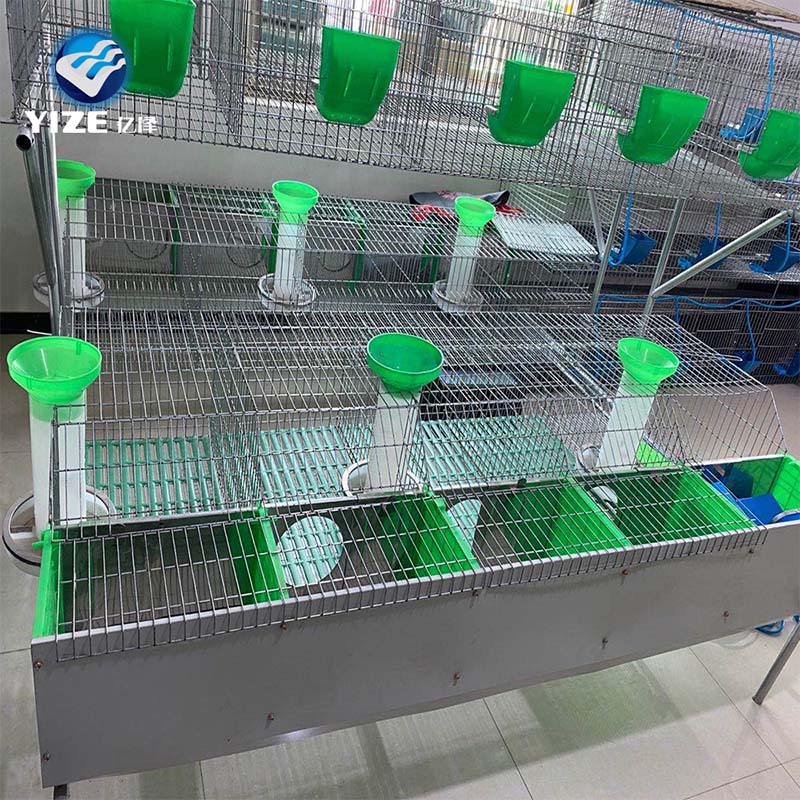broiler transport cage
Dec . 12, 2024 09:50 Back to list
broiler transport cage
The Impact of Broiler Transport Cages on Poultry Welfare and Industry Efficiency
In the contemporary poultry industry, the transport of broilers is a critical phase that warrants significant attention due to its impact on both animal welfare and operational efficiency. Broiler transport cages play a crucial role in this process, as they are designed to facilitate the safe and humane transport of chickens from farms to processing plants. This article delves into the importance of broiler transport cages, their design features, and the implications for the poultry industry.
Understanding Broiler Transport Cages
Broiler transport cages are specifically engineered enclosures used to transport chickens over varying distances. These cages serve multiple purposes they ensure the safety of birds during transit, minimize stress levels, and optimize space utilization within transport vehicles. Proper design and construction of these cages are essential, as they must accommodate the size and weight of broilers while allowing for adequate ventilation and protection against injury.
Historically, traditional methods of transporting broilers often resulted in high stress levels among the birds, leading to health issues and increased mortality rates. The shift towards specialized transport cages has mitigated many of these concerns. Modern cages are constructed from durable materials such as metal or high-density polyethylene, which are not only strong but also easy to clean and sanitize between uses. This hygienic aspect is vital in preventing the spread of diseases that can significantly impact flock health and, subsequently, the profitability of poultry businesses.
Design Features for Animal Welfare
A fundamental aspect of broiler transport cages is their design, which directly influences the welfare of the birds. Key features include
1. Ventilation Effective air circulation is vital to prevent heat stress during transport. Well-ventilated cages help maintain a stable temperature and reduce ammonia buildup from waste.
2. Space Allocation Cages must provide sufficient space for the birds to stand, turn, and lie down comfortably. The density of the birds within the cage can affect their well-being; overcrowded conditions can lead to aggression and injury.
broiler transport cage

3. Accessibility Cages should be designed for easy loading and unloading to minimize the time birds spend confined during transport. This can significantly reduce stress levels.
4. Stabilization and Security Secure locking mechanisms and stability features are essential to prevent the cages from shifting or collapsing during transit, which could endanger the birds.
Economic and Operational Efficiency
The implementation of broiler transport cages not only enhances animal welfare but also contributes to the economic efficiency of poultry operations. By reducing stress and injury rates, producers can decrease the loss of birds due to transport-related issues, ultimately leading to higher yields and profits. Additionally, well-designed cages optimize space utilization within transport vehicles, allowing for more birds to be transported in each load. This efficiency can reduce transportation costs and improve logistics, an essential aspect of the highly competitive poultry market.
Moreover, the adoption of better transport practices can bolster the reputation of poultry producers. Consumers are increasingly concerned about animal welfare, and demonstrating commitment to humane transport methods can enhance a brand's image, thereby increasing marketability.
Challenges and Future Directions
Despite the advancements in broiler transport cage design, challenges remain. The industry must continuously evolve to address issues such as regulatory compliance, environmental concerns, and the need for cost-effective solutions. Innovations in cage materials and design are expected to emerge, particularly in response to growing scrutiny regarding animal welfare practices.
In conclusion, broiler transport cages are a vital component of the poultry supply chain, bridging the gap between farm and processing plant. Their thoughtful design not only promotes the welfare of the birds but also enhances the overall efficiency and sustainability of poultry operations. As the industry continues to confront challenges, the ongoing refinement of transport practices will be paramount in ensuring a humane and profitable poultry sector.
-
Automatic Feeding Line System-Pan Feeder Nipple Drinker|Anping County Yize Metal Products Co., Ltd.
NewsJul.29,2025
-
Hot Sale 24 & 18 Door Rabbit Cages - Premium Breeding Solutions
NewsJul.25,2025
-
Automatic Feeding Line System Pan Feeder Nipple Drinker - Anping County Yize Metal Products Co., Ltd.
NewsJul.21,2025
-
Automatic Feeding Line System Pan Feeder Nipple Drinker - Anping County Yize Metal Products Co., Ltd.
NewsJul.21,2025
-
Automatic Feeding Line System - Anping Yize | Precision & Nipple
NewsJul.21,2025
-
Automatic Feeding Line System - Anping Yize | Precision & Nipple
NewsJul.21,2025






